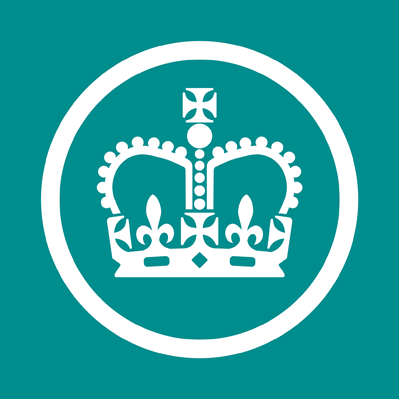Description
HM Revenue and Customs is a non-ministerial department of the UK Government responsible for the collection of taxes, the payment of some forms of state support, the administration of other regulatory regimes including the national minimum wage and the issuance of national insurance numbers. HMRC was formed by the merger of the Inland Revenue and Her Majesty's Customs and Excise, which took effect on 18 April 2005. The department's logo is the St Edward's Crown enclosed within a circle.
Departmental responsibilities
The department is responsible for the administration and collection of direct taxes including Income Tax, Corporation Tax, Capital Gains Tax (CGT) and Inheritance Tax (IHT), indirect taxes including Value Added Tax (VAT), excise duties and Stamp Duty Land Tax (SDLT), and environmental taxes such as Air Passenger Duty and the Climate Change Levy. Other aspects of the department's responsibilities include National Insurance Contributions (NIC), the distribution of Child Benefit and some other forms of state support including the Child Trust Fund, payments of Tax Credits, enforcement of the National Minimum Wage, administering anti-money laundering registrations for Money Service Businesses and collection and publication of the trade-in-goods statistics. Responsibility for the protection of the UK's borders passed to the UK Border Agency within the Home Office on 1 April 2008 and then to UK Border Force and the National Crime Agency in 2013.
HMRC had two overarching Public Service Agreement targets for the period 2008–2011:
- Improve the extent to which individuals and businesses pay the tax due and receive the credits and payments to which they are entitled
- Improve customers' experiences of HMRC and improve the UK business environment
HMRC deals with the top 2,000 large business via CRM (customer relationship managers). The next 8,400 business are dealt with via customer coordinators who provide a single point of contact with HMRC.
History
The merger of the Inland Revenue and HM Customs & Excise was announced by then chancellor of the Exchequer Gordon Brown in the budget on 17 March 2004. The name for the new department and its first executive chairman, David Varney, were announced on 9 May 2004. Varney joined the nascent department in September 2004, and staff started moving from Somerset House and New Kings Beam House into HMRC's new headquarters building at 100 Parliament Street in Whitehall on 21 November 2004.
The planned new department was announced formally in the Queen's Speech of 2004 and a bill, the Commissioners for Revenue and Customs Bill, was introduced into the House of Commons on 24 September 2004, and received royal assent as the Commissioners for Revenue and Customs Act 2005 on 7 April 2005. The Act also creates a Revenue and Customs Prosecutions Office (RCPO) responsible for the prosecution of all Revenue and Customs cases.
The old Inland Revenue and Customs & Excise departments had very different historical bases, internal cultures and legal powers. The merger was described by the Financial Times on 9 July 2004, as "mating the C&E terrier with the IR retriever". For an interim period officers of HMRC are empowered to use existing Inland Revenue powers in relation to matters within the remit of the old Inland Revenue (such as income tax, stamp duty and tax credits) and existing Customs powers in relation to matters within the remit of the old Customs & Excise (such as value added tax and excise duties). However, a major review of the powers required by HMRC was announced at the time of the 2004 pre-budget report on 9 December 2004, covering the suitability of existing powers, new powers that might be required, and consolidating the existing compliance regimes for surcharges, interest, penalties and appeal, which may lead to a single, consolidated enforcement regime for all UK taxes, and a consultation document was published after the 2005 budget on 24 March 2005. Legislation to introduce new information and inspection powers was included in the Finance Act 2008 (Schedule 36). The new consolidated penalty regime was introduced via the Finance Act 2007 (Schedule 24). As part of the spending review on 12 July 2004, Gordon Brown estimated that 12,500 jobs would be lost as result of the merger by March 2008, around 14% of the combined headcount of Customs (then around 23,000) and Inland Revenue (then around 68,000). In addition, 2,500 staff would be redeployed to "front-line" activities. Estimates suggested this may save around £300 million in staff costs, out of a total annual budget of £4 billion.
The total number of job losses included policy functions within the former Inland Revenue and Customs which moved into the Treasury, so that the Treasury became responsible for "strategy and tax policy development" and HMRC took responsibility for "policy maintenance". In addition, certain investigatory functions moved to the new Serious Organised Crime Agency, as well as prosecutions moving to the new Revenue and Customs Prosecution Office.
A further programme of job cuts and office closures was announced on 16 November 2006. Whilst some of the offices closed were in bigger cities where other offices already exist, many were in local, rural areas, where there is no other HMRC presence. Initial proposals indicated that up to 200 offices would close and a further 12,500 jobs lost from 2008 to 2011. In May 2009, staff morale in HMRC was the lowest of 11 government departments surveyed.
In 2013, HMRC began to introduce an update to the PAYE system, which meant it would receive information on tax and employee earnings from employers each month, rather than at the end of a tax year. A trial of the new system began in April 2012, and all employers switched by October 2013.
In 2012, Revenue Scotland was formed and on 1 April 2015 it took HMRC responsibility to collect devolved taxes in Scotland. In 2015 Welsh Revenue Authority was formed and on 1 April 2018 it took HMRC responsibility to collect devolved taxes in Wales.
On 12 November 2015, HMRC proposed to replace local offices with 13 regional centres by 2027.





















